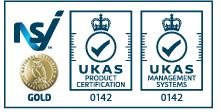
It is essential that schools and other educational buildings have the right type of fire extinguishers and the correct number of fire extinguishers too. These need to be safely installed in the most appropriate areas. Further to this, your teaching staff need to be trained on how to safely and correctly use these fire extinguishers. Fire extinguisher and fire safety training is essential in a busy environment like a school setting. This is because fire extinguishers in education facilities can prevent harm or injury to staff, students and the property.
There are many different types of fire extinguishers. The fire extinguisher you need is dependent on the type of fire in the building. For example, a Class A fire extinguisher tend to be the most appropriate fire extinguishers for a fire caused by paper, wood, textiles and plastic. These are common sources of fire in schools. Therefore, a Class A fire extinguisher will often be needed in educational facilities.
You may also need Class B fire extinguishers. These are commonly used in schools that have kitchens. Within the kitchen there will be a selection of cookers, deep fat fryers, whisks, food processors and microwaves. These can all be a fire risk that will need a Class B fire extinguisher. The Class B fire extinguisher is effective against flammable liquid fires. This includes things like cooking oils, kerosene, paint, oil and gasoline for example. This type of fire extinguisher is also common in science blocks of larger schools too.
A Class C fire extinguisher will commonly be found in science labs within educational settings too. This type of fire extinguisher is used to put out fires that are caused by flammable gasses. These flammable gasses include propane, methane and butane for example. All of which are commonly used chemicals in science lessons.
All of the fire extinguishers within your educational facility must be serviced regularly and well maintained. This is done to ensure that your fire extinguishers are in good working order. As stated by the British Standard BS5306-2:2009, fire extinguishers could be serviced on a yearly basis by a competent person. These annual fire extinguisher services and maintenance will ensure that if there is a fire or emergency, your fire extinguishers will not let you down.
Vandalism of fire extinguishers in educational settings is very common. This is often due to the heavy footfall and full occupancy of the building. Fire extinguishers are often placed in corridors for example, and they can become damaged or vandalised by accident.
We would recommend that you have a member of staff that checks the fire extinguishers monthly to ensure there is no damage to them. If damage is spotted, then call in our fire extinguisher professionals to your education premises to repair, maintain or replace them.

